Microsoft Teams challenges work chat rival Slack
- Published
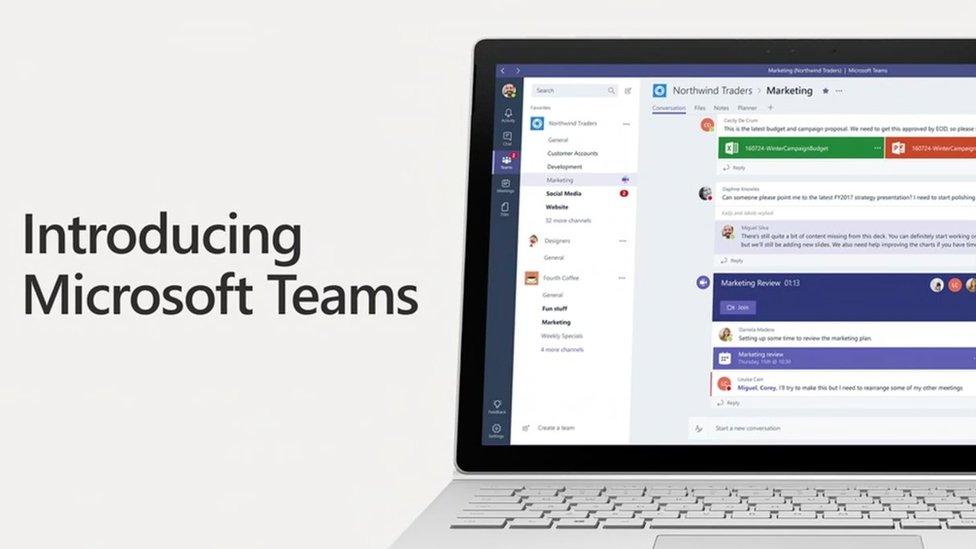
Microsoft's work chat tool launches three years after Slack
Microsoft has launched a chat tool designed to provide work colleagues with a more creative and fun way to collaborate than via email.
Teams allows conversation threads to be seen by all of a group's members by default, although they can be restricted to select individuals.
It will provide access to Skype video chats, editable Office documents, bots, emojis and Gifs within its interface.
It will compete with Slack, a similar app from a Canadian start-up.
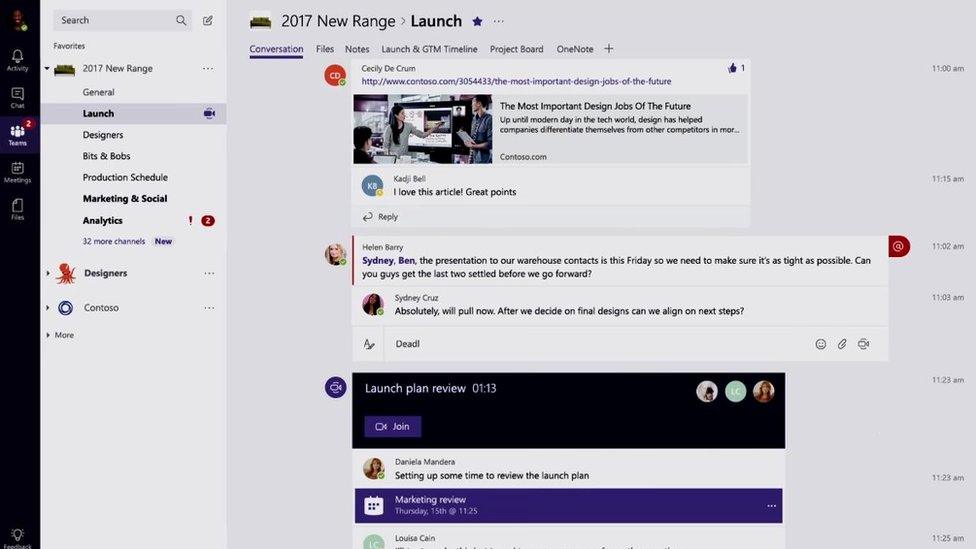
Teams allows discussions about one topic - such as a product launch - to be viewed as a single thread rather than multiple emails
Slack developed out of a tool created for an aborted video game.
It is now used by workers at Nasa, Buzzfeed, eBay and the BBC among others and claims more than four million daily active users.
Slack hit the headlines last year when its developer achieved a $1bn (£813m) valuation within eight months of the software's launch.
It had long been expected that Microsoft would pose a challenge to its rapid growth.
Facebook is also attempting to move into the area with its own Workplace platform.
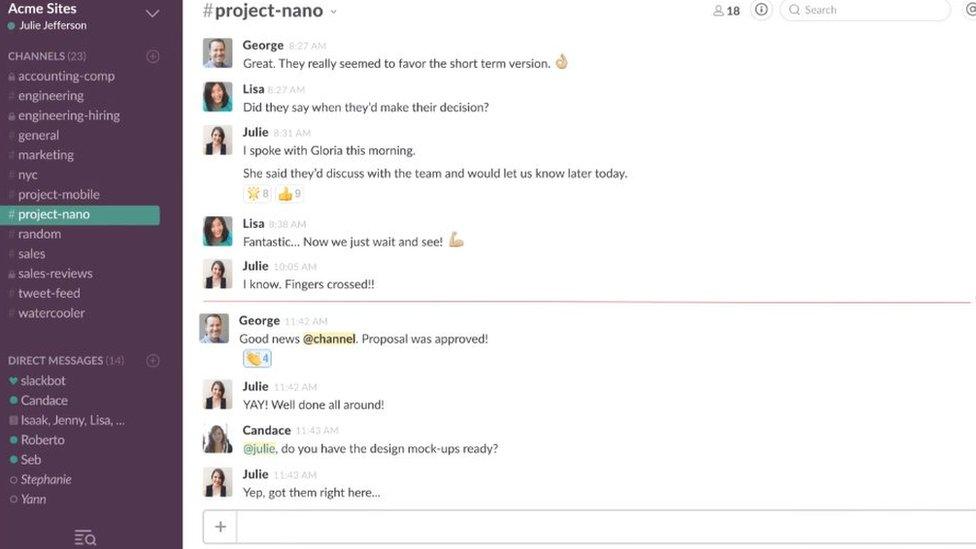
Slack describes its tool as a way to communicate without chaos
Teams is being included in the Office 365 suite of apps, which also includes online versions of Word, Office, Excel, Powerpoint and OneNote.
One analyst suggested that move gave it a good chance of success.
"Slack already has great brand recognition and will continue to have a role in any working environment that doesn't buy into Office 365," Chris Green, from the consultancy Lewis, said, "so, those that use Google Docs, Open Office or even Microsoft's traditional desktop apps rather than those provided via its cloud subscription service.
"But if you use Office 365, you are almost certainly going to shift your allegiances just for simplicity's sake."
Microsoft says 85 million people currently use Office 365.
They can already start using a test version of Teams ahead of a full rollout planned within the first three months of 2017.
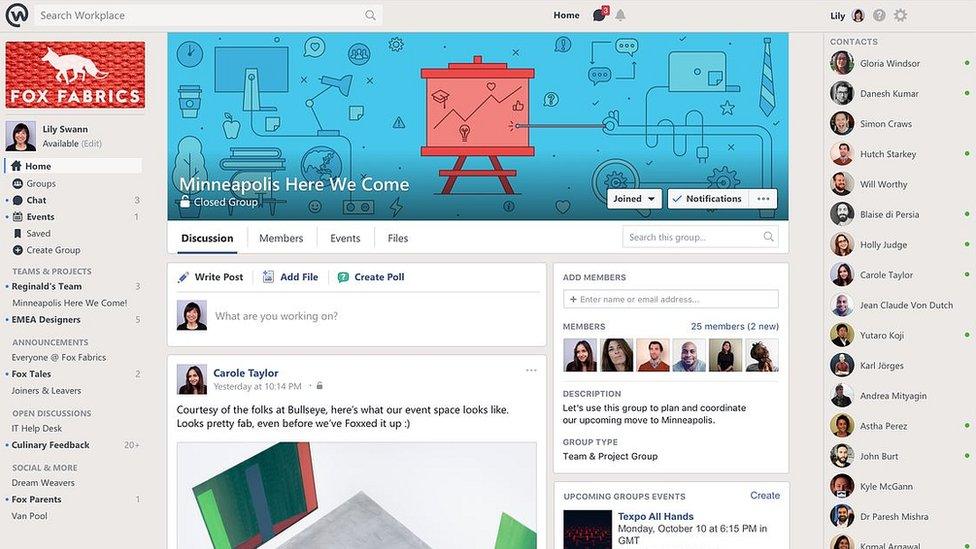
Facebook opened up its Workplace platform to companies in October
Workers have long complained of being overwhelmed with the amount of email they receive, leading to them missing important messages or wasting time scouring through their inboxes.
Although Teams does not address the challenge posed by external contacts, it does seek to streamline internal communications.
Different conversations can be organised by topic, allowing colleagues to scroll back through threads and see how discussions developed before joining in.

Teams supports Skype video chats as well as text-based conversations
Notification alerts are sent if a person is referred to by name, to draw their attention to one of the topic channels.
And tabs can be set up to make favourite apps and files available without having to switch to different software.
Microsoft says this allows ideas to develop "more organically" than otherwise possible and foresees Teams becoming a "central hub" for work-related conversations.

Slack's co-founder Stewart Butterfield tweeted about the advert it ran ahead of Microsoft's announcement
Slack has posted a blog and taken out a newspaper advert in response, saying it is excited to have competition but warning that running such a tool is "harder than it looks".
"You're not going to create something people really love by making a big list of Slack's features and simply checking those boxes," it says.
"Tiny details make big differences.
"If you want customers to switch to your product, you're going to have to match our commitment to their success and take the same amount of delight in their happiness."
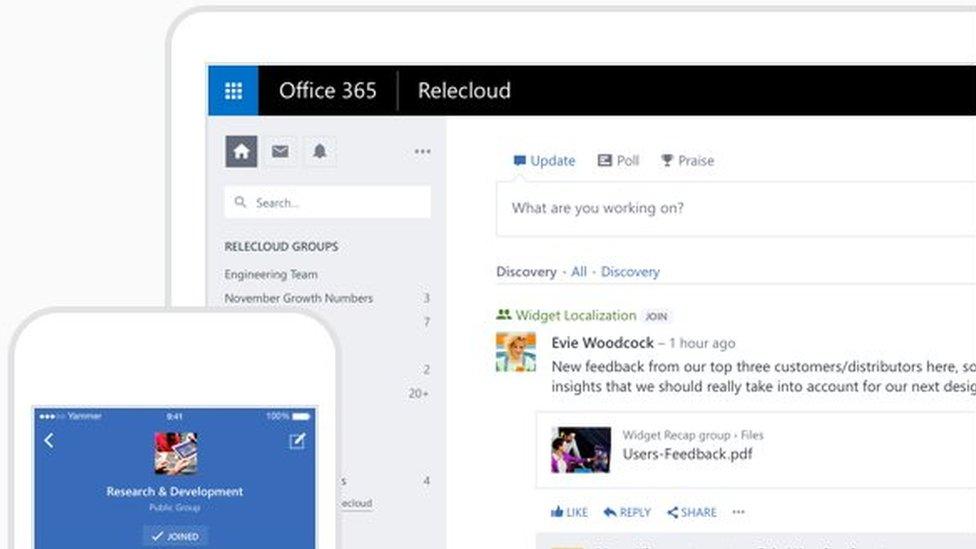
Microsoft had previously promoted Yammer software as being a kind of social network for work colleagues
Microsoft already offers Yammer and Sharepoint as alternative work collaboration tools.
Some of their features overlap with Teams, and part of the software giant's challenge will be to explain under what circumstances one should be used rather than the other.
But Mr Green suggested that was only a temporary issue.
"The three products will have to overlap for a while because Microsoft needs to give people time to transition," he said.
"But it's logical to ask why use three apps when you can just use one.
"With Teams, Microsoft appears to have pulled together the best of Yammer and Sharepoint and added missing functionality.
"So if it ties together as well as it claims to do, it should make for a compelling collaboration platform."
- Published10 October 2016

- Published21 September 2016

- Published7 May 2015
